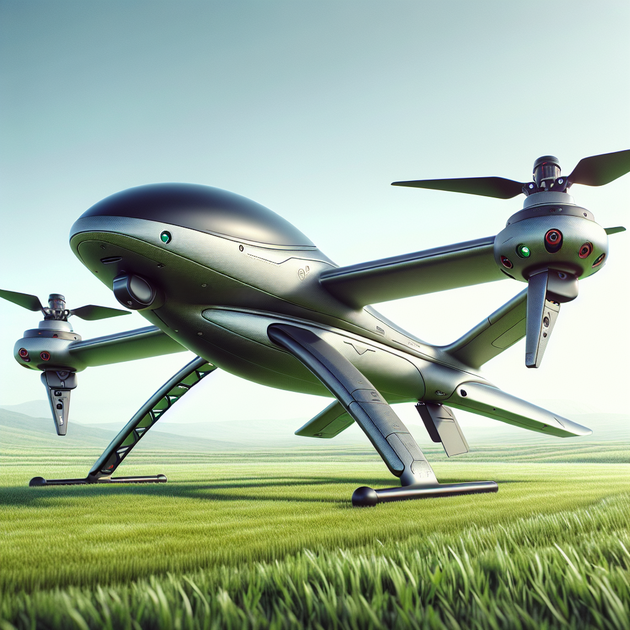Ever wondered how a drone can take off like a rocket but cruise like an airplane? That’s where a fixed wing tail sitter VTOL UAV comes in—a clever hybrid design that combines the best of both worlds. Whether you’re a seasoned builder or just starting to explore new types of drones, understanding this unique setup is essential for anyone interested in creative flight solutions.
What Makes a Fixed Wing Tail Sitter Special?
A fixed wing tail sitter is exactly what it sounds like—a remote-controlled plane that stands upright on its tail to take off and land vertically (VTOL means vertical takeoff and landing). Once in the air, it tilts forward and shifts into regular airplane flight. This makes it perfect for tight spaces where there’s no runway but you still want the efficiency of gliding through the sky.
Let’s break down what sets this design apart:
- Vertical Takeoff & Landing: No need for runways or launch catapults.
- Fixed Wing Efficiency: Longer flight times than quadcopters thanks to aerodynamic lift.
- Compact & Portable: Smaller wingspans mean easier transport.
- Challenging Controls: Switching between hover and forward flight takes practice (and good programming).
Key Specs of This Fixed Wing Tail Sitter VTOL UAV
Let’s get into the nuts and bolts (or rather, wings and motors). Here’s what powers this particular build:
- Wingspan (b): 820 mm
- Root Chord (Cr): 220 mm
- Tip Chord (Ct): 140 mm
- Washout: -1.5° at 70% span; -2.5° at tip (helps with stall resistance)
- Wing Area (S): ~15 dm²
- Main Airfoil: MH60AUW
- Total Weight: ~650-700g (without payload)
- Battery: 4s 21700 Li-ion pack (4000 mAh for solid endurance)
- Motors: Dual 2207 size at 1800kv
- Props: Tri-blade 6x3x3s—plenty of thrust in both hover and cruise mode
- Cameras/Video Options: DJI O4/O4 Lite/Analogue/Motionsic BAG options
- Sensors: GPS plus Flight Controller onboard (for autonomous features)
All these choices balance weight with power—enough to handle vertical launches without draining your battery in minutes.
Packing Power: Battery Setup Matters
Power is where many homebuilt drones can stumble. With this setup’s choice of a high-capacity Li-ion pack (21700 cells at 4s/4000mAh), you get two big advantages:
- Bigger energy reserves vs. standard LiPos—great if you want longer flights.
- Lighter than most alternatives at this capacity—the whole rig stays under a kilo even with gear installed.
Of course, there are trade-offs. Li-ion packs aren’t as punchy as LiPos when it comes to raw current draw. But since this craft is tuned for efficiency in both hover and cruise modes (thanks to those well-sized props and motors), you’ll find it holds up surprisingly well.
Anecdote: Lessons From Test Flights
One builder shared their experience after months of tinkering with similar designs. On their first successful flight day, they took off from a grassy field barely wider than their car—not something most RC planes could dream of! The transition from hover to forward flight was smooth until a gust caught one wing mid-switch; quick stick work saved the day. The lesson? Setting up proper washout angles really does help keep things stable during that tricky transition phase.
Troubleshooting Common Challenges
Building any fixed wing tail sitter isn’t exactly plug-and-play. Here are some common hurdles—and ways to handle them:
- Tuning Transitions: Getting your flight controller settings dialed is crucial for safe switchovers between vertical/horizontal modes.
- Battery Placement: Shifting your CG by just a centimeter can make or break stable hovering.
- Cable Management: Keep wires tidy—prop wash can snag loose lines in unexpected ways!
- Spares On Hand: Stock up on propellers; tri-blades snap easier during rough landings compared to dual blades.
The Big Question: Is This The Future of DIY Drones?
With their blend of convenience and performance, it’s easy to see why more hobbyists are taking on fixed wing tail sitter projects. They’re not as simple as plug-and-play quadcopters—but once dialed in, they offer versatility that opens up all kinds of flying fields.
So what would you use a fixed wing tail sitter VTOL UAV for—urban exploration? Aerial mapping? Or just impressing folks at your local flying club?

Leave a Reply